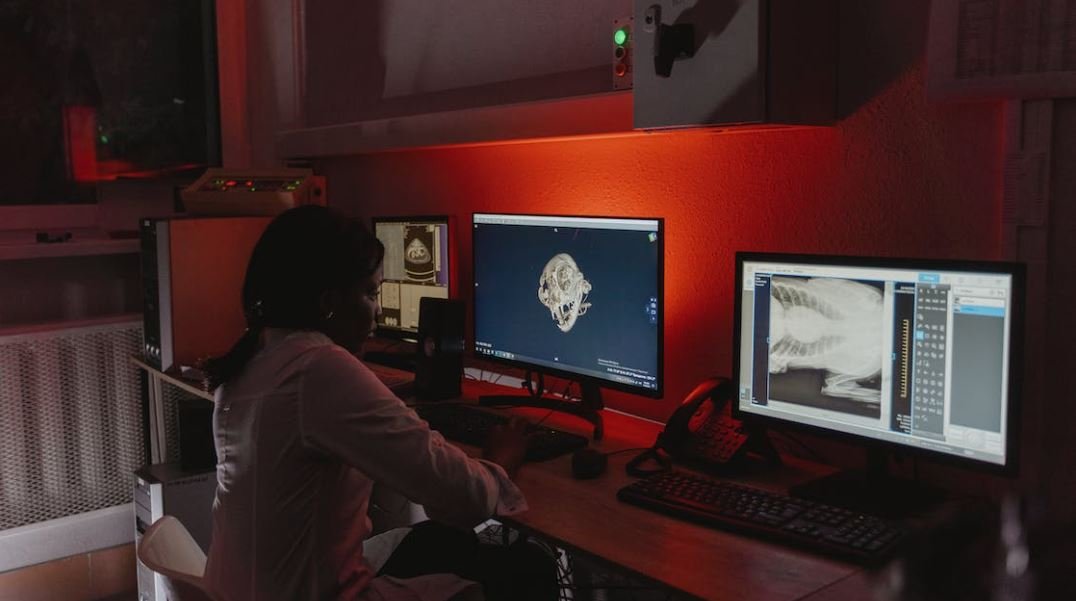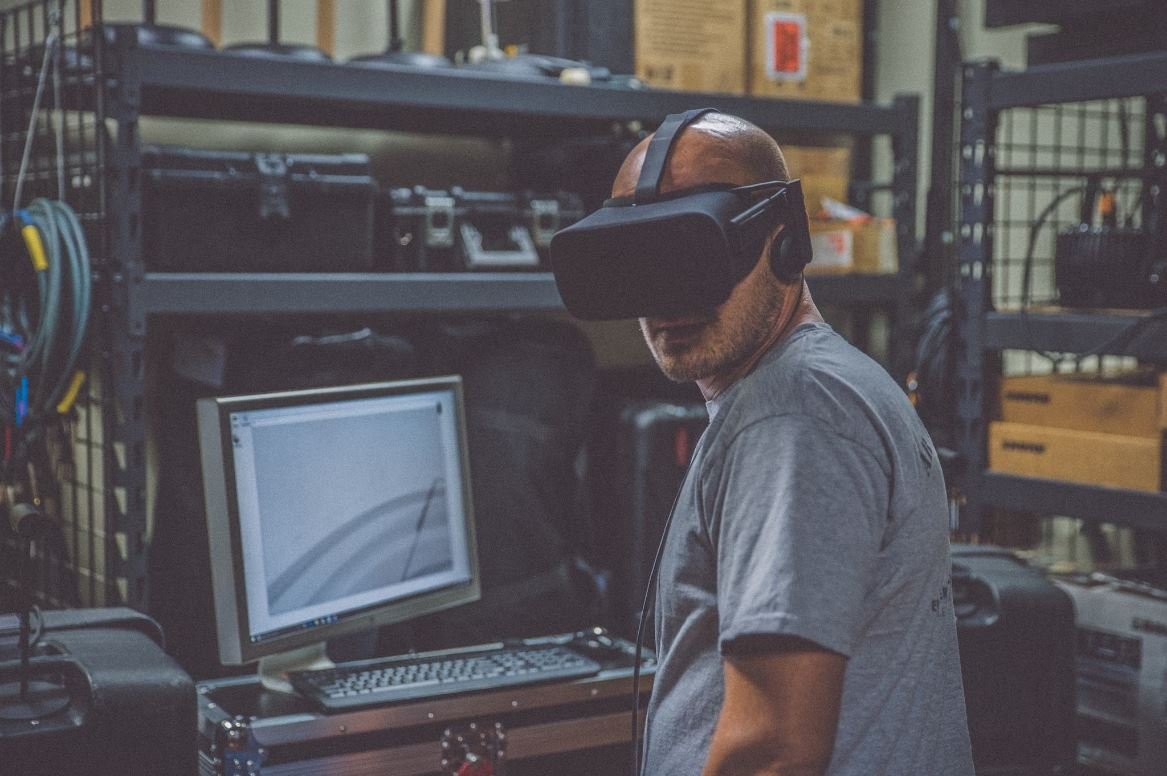Deepfake Ethics
Deepfakes, a term derived from “deep learning” and “fake,” refer to synthetic media created using artificial intelligence (AI) techniques to manipulate or generate visual and audio content that appears authentic but is actually fabricated. While deepfakes have garnered attention for their potential in entertainment and creative industries, their ethical implications have become a subject of concern. This article explores the ethics surrounding deepfakes and the challenges they pose in today’s digital society.
Key Takeaways:
- Deepfakes are synthetic media created using AI techniques that manipulate or generate visual and audio content.
- Deepfake technology poses ethical concerns due to its potential for misinformation, privacy invasion, and harm to individuals.
- Addressing deepfake ethics requires a multifaceted approach involving technology development, legal frameworks, and media literacy awareness.
**Deepfake** technology has raised alarms with the rise of realistic manipulated media. *The ability to create fake videos that convincingly imitate real individuals has sparked concerns around privacy invasion and disinformation campaigns.* While deepfakes can be used for harmless purposes like entertainment and satire, there are growing concerns about their potential negative consequences. From political propaganda to revenge porn, deepfakes pose serious ethical challenges that require attention.
The Ethical Challenges of Deepfakes
1. False Information and Misleading Context
Deepfakes have the potential to propagate **false information** and create **misleading contexts**, leading to confusion and manipulation of the public. *The ability to swap faces and create realistic scenarios can confuse viewers and make them believe in events that never occurred.* This poses a substantial threat to the credibility of information and trust in media.
2. Privacy Invasion and Harassment
Deepfake technology enables the creation of non-consensual **pornographic content** and the manipulation of individuals’ digital presence without their consent, violating their **privacy rights**. *This introduces the risk of harassment, extortion, and damage to personal and professional lives.* Protecting individuals from deepfake-related privacy invasion is crucial, but it presents significant challenges in the digital age.
The Role of Technology and Regulation
Technology Development
While deepfake technology raises ethical concerns, it also provides an opportunity to develop **countermeasures**. *Researchers and AI experts are working on developing **deepfake detection techniques** to identify manipulated media and improve platform algorithms.* Technological advancements can help detect and label deepfakes, providing users with tools to determine the authenticity of content.
Legal Frameworks
Legal systems worldwide are grappling with the challenges posed by deepfakes. *The development of clear and comprehensive **laws and regulations** regarding the creation, distribution, and use of deepfakes is essential to mitigate their harmful effects.* These legal frameworks should balance freedom of expression with the protection of individuals’ privacy and prevent malicious usage of deepfake technology.
The Importance of Media Literacy
Building **media literacy** among individuals is a crucial aspect of deepfake ethics. *Teaching people to critically analyze media, understand its potential manipulation, and identify deepfake signs can help counter the spread of disinformation and misinformation.* By equipping individuals with the necessary knowledge and skills, society can better navigate the challenges posed by deepfakes.
Table: Deepfake Use Cases
| Use Case | Explanation |
|---|---|
| Entertainment and Satire | Deepfakes can be used for harmless fun, creating entertaining videos and social media content. |
| Political Propaganda | Deepfakes can be weaponized to spread false narratives and manipulate public opinion. |
| Revenge Porn | Non-consensual deepfake pornographic content can be used as a means of harassment and blackmail. |
Conclusion
The ethical implications of deepfake technology are complex and multifaceted. Addressing deepfake ethics requires collaboration between tech developers, lawmakers, and media literacy initiatives. By understanding the challenges posed by deepfakes and implementing ethical guidelines, we can strive to navigate this evolving landscape and protect individuals from the potential harms of manipulated media.

Common Misconceptions
Misconception 1: Deepfakes are always used for malicious purposes
One common misconception surrounding deepfakes is that they are exclusively used for spreading misinformation, scams, and malicious activities. While it is true that deepfakes can be abused for such purposes, it is important to understand that there are also positive and legitimate uses for this technology.
- Deepfakes can be utilized in the film industry to create more realistic special effects.
- They can be used in scientific research to simulate various scenarios and study human behavior.
- Deepfakes can assist individuals with disabilities or speech impairments to communicate more effectively through synthetic voices.
Misconception 2: Deepfakes are always easy to detect
Contrary to what some may believe, detecting deepfakes is not always a simple task. While certain deepfakes may exhibit noticeable flaws, advancements in the underlying technology have made it increasingly difficult to distinguish between real and fake content.
- Deepfakes can now be created with higher image and audio quality, making them harder to identify through visual or auditory analysis alone.
- Sophisticated algorithms and neural networks used in generating deepfakes have improved their realism, making it challenging for human observers to spot the manipulation without advanced tools.
- Some deepfakes are specifically designed to mimic imperfections commonly found in real videos, adding an additional layer of authenticity.
Misconception 3: Deepfakes are only a recent phenomenon
While the term “deepfake” itself is relatively new, the concept of digitally manipulating media has been around for decades. Deepfakes are simply an evolution of this technology and are not solely a product of the current era.
- Digital image editing software, such as Adobe Photoshop, has been widely available since the 1990s, enabling the manipulation of visuals and creating “fake” images.
- Audio manipulation techniques, like voice cloning, have also been used for many years, giving rise to synthesized voices that can imitate real individuals.
- Deepfake technology is continually evolving, but the underlying principles have been present for a significant period, even if less sophisticated than its current state.
Misconception 4: Deepfakes are always illegal
While the creation and distribution of certain deepfakes can indeed be illegal in many jurisdictions, it is crucial to note that not all deepfakes automatically fall under such categorization. The legality of deepfakes is highly context-dependent.
- Deepfakes used for parody, satire, or other types of entertainment may fall under the protection of free speech laws in some countries.
- Some deepfakes may be created for artistic purposes, and their production could be legally protected as a form of expression.
- However, the creation of non-consensual explicit deepfakes, for instance, is largely considered a violation of privacy and may be punishable by law in many jurisdictions.
Misconception 5: Deepfakes are primarily a threat to individuals
While individuals can indeed become victims of deepfake attacks, the impact and implications of this technology extend beyond personal harm. Deepfakes pose risks to various sectors and society as a whole.
- Deepfakes can damage the reputation of public figures and institutions, leading to public mistrust and widespread misinformation.
- In the political realm, deepfakes can be used to manipulate public opinion, influence elections, and undermine democratic processes.
- The entertainment industry may face challenges regarding intellectual property rights and copyright infringement, as deepfakes can mimic real actors and musicians without permission.

The Rise of Deepfake Videos
In recent years, deepfake technology has become increasingly sophisticated, raising numerous ethical concerns surrounding its use. Deepfake videos are created by artificial intelligence algorithms that can manipulate or fabricate visual content, often convincingly mimicking the appearance and behavior of individuals. These videos have the potential to deceive, manipulate, and spread misinformation on a massive scale. The following tables provide insights into the various dimensions of deepfake ethics:
The Impact of Deepfakes on Journalism
Deepfake videos pose a significant threat to the field of journalism, as they can undermine public trust and the verifiability of news. The table below illustrates instances where deepfake technology has been misused to manipulate public opinion:
| Case | Description |
|---|---|
| 2018 US Midterm Elections | Multiple deepfake videos were disseminated online, distorting speeches made by political candidates to sway public sentiment. |
| Public Figure Defamation | Deepfake videos have been used to defame public figures by manipulating their words and actions, creating false narratives. |
| News Fabrication | Deepfake technology has the potential to enable the creation of entirely fabricated news stories, further blurring the line between truth and fiction. |
The Legal and Regulatory Landscape of Deepfakes
Addressing the ethical challenges posed by deepfakes requires a comprehensive legal and regulatory approach. The table below highlights legislation and initiatives aimed at combating the negative impacts of deepfake technology:
| Country/Region | Legal Measures |
|---|---|
| California, USA | Assembly Bill AB 602 proposed criminalizing the malicious creation and distribution of deepfake videos without consent. |
| European Union | The EU is considering provisions for mandatory labeling and authentication of digitally manipulated media. |
| Australia | The Department of Communications is exploring options for legislation to address deepfake content. |
Deepfake Use in Cybersecurity Threats
Deepfake technology also poses risks to cybersecurity, as it can be utilized in various malicious activities, including fraud, phishing, and espionage. The following table highlights specific instances where deepfakes have been exploited for nefarious purposes:
| Threat | Description |
|---|---|
| CEO Fraud Attacks | Deepfake audio and video technology has been employed to mimic the voices and appearances of executives to deceive employees into fraudulent transactions. |
| Phishing Attacks | Attackers use deepfake content to impersonate legitimate entities and trick people into revealing sensitive information. |
| Political Espionage | State-sponsored actors utilize deepfakes to manipulate video evidence, create disinformation campaigns, and destabilize governments. |
Deepfakes and Privacy Concerns
The development of deepfake technology raises significant privacy concerns, as anyone’s likeness can be manipulated without their consent. The table below examines the implications of deepfakes on personal privacy:
| Privacy Concern | Impact |
|---|---|
| Non-consensual Pornography | Deepfake pornographic videos have been created by using the faces of individuals without their permission or knowledge. |
| Identity Theft | Personal images and videos can be used as deepfake material to bypass identity verification systems. |
| Altered Reputation | Deepfake videos can be used to damage an individual’s reputation by making them appear to engage in actions they never actually committed. |
The Psychological Impact of Deepfakes
Deepfake videos have the potential to deeply affect individuals psychologically, as they blur the line between reality and fabrication. The following table explores some of the psychological impacts of deepfakes:
| Impact | Description |
|---|---|
| Trust Erosion | Exposure to convincing deepfake videos erodes trust in visual media, making it more challenging for individuals to discern truth from falsehood. |
| Manipulation Vulnerability | Individuals can become more susceptible to manipulation when they are unsure whether the content they are viewing is genuine or artificially generated. |
| Emotional Distress | Being the subject of a deepfake or witnessing the malicious use of deepfake technology can cause severe emotional distress. |
Deepfakes and Election Interference
The potential for deepfakes to disrupt electoral processes and undermine faith in democratic institutions is a significant concern. The table below demonstrates instances of deepfake use in election interference:
| Election | Deepfake Tactics |
|---|---|
| Brazil 2018 Presidential Election | Deepfakes were deployed to create false narratives about candidates, influencing voter sentiment and fueling social division. |
| India 2019 General Election | Deepfake content targeting political figures was circulated to tarnish their reputations and manipulate public opinion. |
| United States 2020 Presidential Election | Concerns arose regarding the potential use of deepfakes to spread misinformation and influence voters. |
Deepfakes in Entertainment and Creative Fields
While deepfakes raise serious ethical questions, they also find applications in the entertainment industry and creative fields. The table below showcases beneficial uses of this technology:
| Application | Description |
|---|---|
| Visual Effects Enhancement | Deepfake technology can improve visual effects in movies, allowing for realistic and seamless integration of computer-generated content with live-action footage. |
| Preserving Legacies | Deepfakes can enable deceased actors or performers to reprise their roles, preserving their legacies in media and entertaining future generations. |
| Immersive Storytelling | Creators can utilize deepfakes to immerse audiences in fictional worlds, blurring the boundaries between reality and imagination. |
Combatting Deepfakes: Technological Innovations
To address the negative implications of deepfakes, researchers are developing innovative technologies to detect and mitigate their impact. The table below highlights key technological solutions:
| Solution | Description |
|---|---|
| Deepfake Detection Algorithms | Researchers are developing algorithms capable of identifying visual or audio artifacts present in deepfake videos to assist in their detection. |
| Blockchain-Based Verification | The use of blockchain technology can help authenticate and validate media content, proving its origin and preventing tampering. |
| Lip-Reading AI | Advancements in lip-reading artificial intelligence can help identify discrepancies between audio and visual elements of a video, raising red flags for potential deepfakes. |
Deepfake technology continues to evolve rapidly, presenting both benefits and risks to society. While innovations in deepfake detection and regulation offer hope for mitigating their harmful effects, the broader ethical implications surrounding deepfakes necessitate ongoing research, robust legal frameworks, and critical societal awareness.
Frequently Asked Questions
What is deepfake technology?
Deepfake technology uses artificial intelligence algorithms to create or manipulate media, such as videos, images, or audio, by substituting or superimposing faces or voices of one person onto another.
What are the main ethical concerns surrounding deepfake technology?
Some of the major ethical concerns regarding deepfake technology include the potential for malicious use, deception or manipulation, violation of privacy and consent, damage to reputation, and exacerbation of misinformation and disinformation.
How can deepfake technology be misused?
Deepfake technology can be misused in various ways, such as spreading misinformation, creating fake news, fabricating evidence, perpetuating revenge or blackmail, conducting scams or identity theft, and manipulating political or social discourse.
What are the privacy implications of deepfake technology?
Deepfake technology poses significant privacy concerns as it can be used to create non-consensual explicit content or invade someone’s privacy by manipulating their appearance or voice without their permission.
Can deepfake videos be used for entertainment purposes?
While deepfake videos can be used for entertainment purposes, it is crucial to ensure that they are clearly identified as manipulated content to avoid deceiving or misleading viewers. Otherwise, their usage may contribute to normalization and the potential harm caused by deepfake technology.
Is it legal to create and share deepfake content?
The legality of creating and sharing deepfake content varies depending on various factors such as jurisdiction, consent, and the intent behind its creation or dissemination. In many cases, deepfake content that harms or defames others without their consent can be considered illegal.
How can we combat the ethical issues surrounding deepfake technology?
There is no one-size-fits-all solution to combat the ethical issues related to deepfake technology, but potential strategies include raising awareness, developing robust detection tools, promoting media literacy, implementing regulations or guidelines, and fostering responsible use of AI.
What are the possible implications of deepfake technology on politics and society?
Deepfake technology can have significant implications on politics and society by amplifying the spread of misinformation, manipulating public opinion, eroding trust in media and democratic processes, and potentially undermining the credibility of visual evidence.
Is there any positive potential for deepfake technology?
While the potential risks and challenges associated with deepfake technology are significant, there are also potential positive applications, such as in entertainment, creative arts, historical preservation, or improving accessibility for people with disabilities. However, careful consideration and responsible use are necessary to maximize the positive impacts.
What are the future implications of deepfake technology?
The future implications of deepfake technology are vast and uncertain. As the technology advances, it may become increasingly difficult to distinguish real from fake, demanding a collective effort to address the challenges and establish ethical guidelines to ensure its responsible use.




